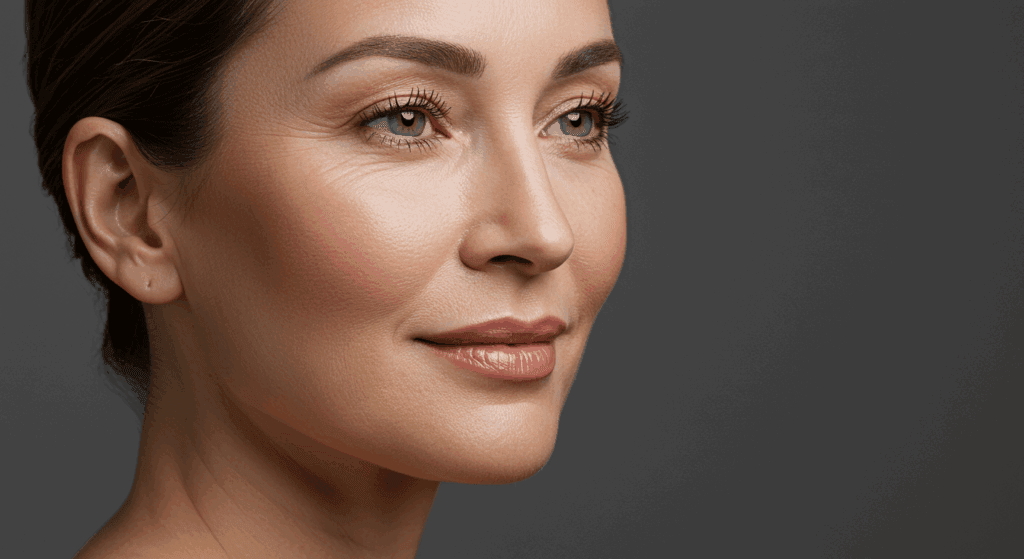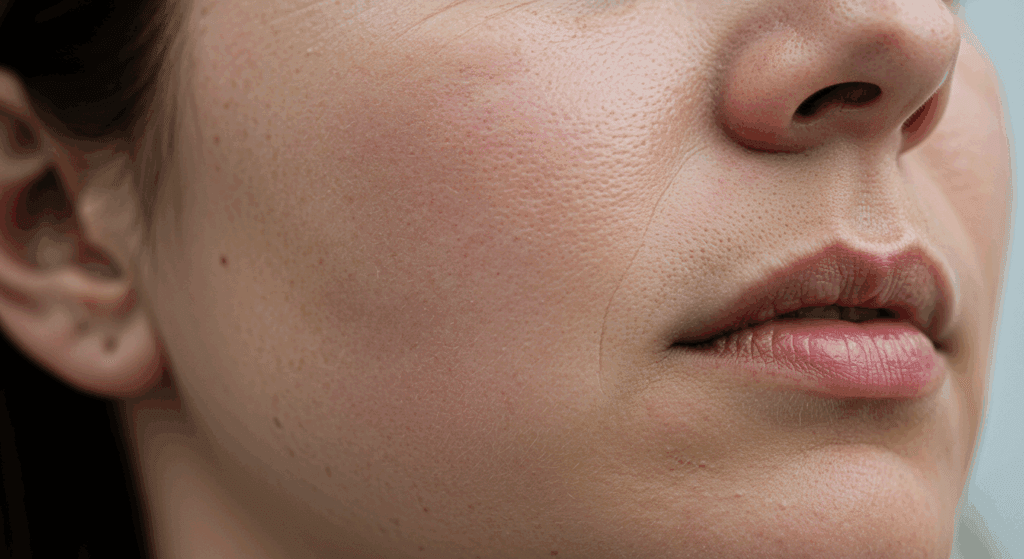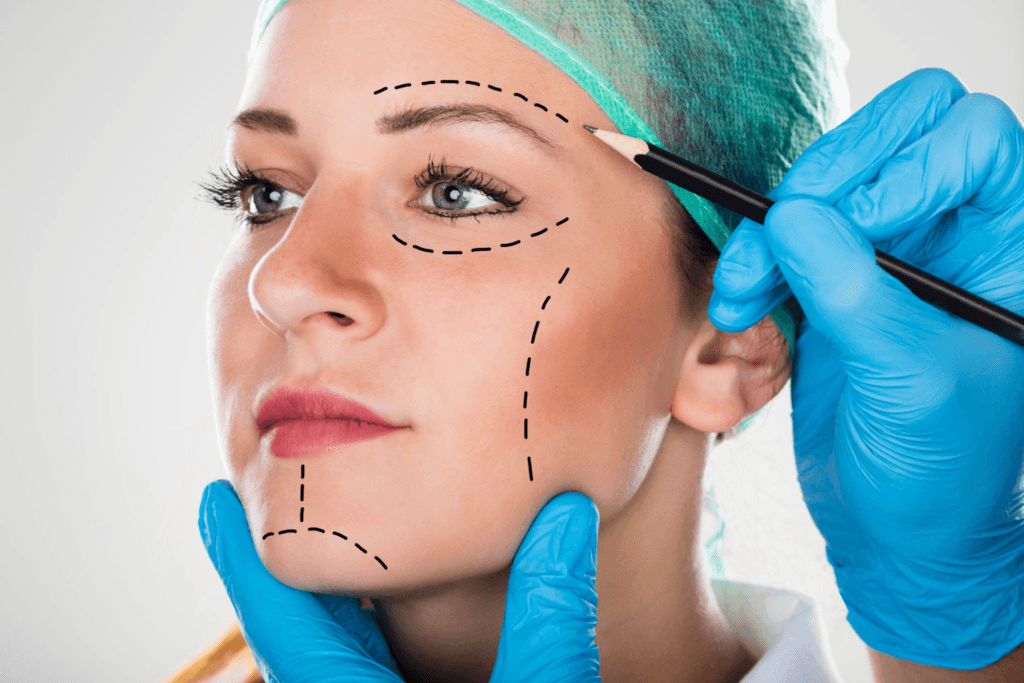Considering a facelift in another country but unsure how to choose a reputable clinic or surgeon? You’re not alone. With the rise of medical tourism, more people are seeking high-quality, cost-effective cosmetic procedures abroad. However, selecting the right clinic and surgeon is critical to ensuring your safety, satisfaction, and optimal results.
In this comprehensive guide, we’ll explore:
- How to research and verify surgeon credentials.
- The importance of facility accreditation and safety standards.
- Tips for evaluating patient reviews and testimonials.
- How to prepare for consultations and ask the right questions.
- Logistical considerations for travel, recovery, and follow-up care.
By the end of this guide, you’ll have a clear roadmap for choosing a reputable clinic or surgeon for your facelift abroad, ensuring a safe and successful experience. Let’s get started!

Table of Contents
1. Researching and Verifying Surgeon Credentials
1.1. Importance of Board Certification
Board certification is a critical indicator of a surgeon’s qualifications and expertise. It ensures that the surgeon has met rigorous training and ethical standards in their field.
| Aspect | Why It Matters | How to Verify |
|---|---|---|
| Board Certification | Ensures the surgeon has undergone rigorous training and adheres to ethical standards. | Check certifications from recognized boards like ISAPS, ASPS, or local equivalents. |
| Specialization in Facelifts | Surgeons specializing in facelifts have more experience and better outcomes. | Ask about the number of facelifts performed annually and request before-and-after photos. |
| Continuing Education | Indicates the surgeon stays updated with the latest techniques and advancements. | Inquire about recent training, workshops, or conferences attended. |
| Professional Affiliations | Membership in professional organizations reflects credibility and commitment to the field. | Look for affiliations with ISAPS, ASPS, or local plastic surgery societies. |
1.2. Evaluating Surgeon Experience
The experience of a surgeon plays a significant role in the success of your facelift. Here’s how to evaluate their expertise:
| Aspect | Why It Matters | How to Verify |
|---|---|---|
| Years of Practice | More years of practice often correlate with refined skills and better outcomes. | Ask how long the surgeon has been performing facelifts. |
| Number of Facelifts Performed | A higher volume of procedures indicates greater experience and expertise. | Request statistics on the number of facelifts performed annually. |
| Before-and-After Photos | Provides visual evidence of the surgeon’s work and consistency in results. | Review a portfolio of before-and-after photos from previous patients. |
| Patient Testimonials | Offers insights into patient satisfaction and experiences. | Read testimonials on the surgeon’s website or third-party platforms like RealSelf. |
| Complication Rates | Low complication rates indicate a surgeon’s skill and adherence to safety protocols. | Ask about the surgeon’s complication rates and how they handle adverse events. |
1.3. Checking for Malpractice History
Checking for any history of malpractice claims or disciplinary actions is essential for ensuring your safety and peace of mind.
| Aspect | Why It Matters | How to Verify |
|---|---|---|
| Malpractice Claims | Indicates potential issues with the surgeon’s practice or patient care. | Research through local medical boards or online databases for any claims or lawsuits. |
| Disciplinary Actions | Suggests violations of ethical or professional standards. | Check with the country’s medical regulatory body for any disciplinary records. |
| Patient Complaints | Highlights recurring issues or concerns raised by previous patients. | Look for patient reviews and complaints on forums or review sites. |
| Legal Recourse | Understanding your rights in case of complications or dissatisfaction. | Familiarize yourself with the legal protections available in the destination country. |
Pro Tip: Use online resources like the International Society of Aesthetic Plastic Surgery (ISAPS) or local medical boards to verify a surgeon’s credentials and check for any red flags.
2. Evaluating Facility Accreditation and Safety Standards
2.1. Importance of Facility Accreditation
Facility accreditation ensures that the clinic or hospital meets international safety and quality standards. Here’s what to look for:
| Accreditation | Why It Matters | How to Verify |
|---|---|---|
| JCI (Joint Commission International) | Indicates the facility meets global healthcare standards for patient safety and quality. | Check the JCI website or ask the facility for their accreditation certificate. |
| ISO Certification | Ensures the facility follows quality management systems and best practices. | Look for ISO 9001 or similar certifications. |
| Local Health Authority Accreditation | Confirms compliance with local medical regulations and standards. | Verify through the country’s health ministry or equivalent authority. |
| Surgical Facility Standards | Ensures the facility is equipped for safe surgical procedures and emergency situations. | Ask about the facility’s safety protocols, equipment, and emergency preparedness. |
| Patient Safety Record | Indicates the facility’s track record for patient safety and outcomes. | Request data on complication rates or patient safety incidents. |
2.2. Assessing Safety Protocols
Safety protocols are crucial for minimizing risks during your facelift procedure. Here’s what to assess:
| Protocol | Why It Matters | How to Verify |
|---|---|---|
| Sterilization Practices | Prevents infections and ensures a safe surgical environment. | Ask about the facility’s sterilization methods and equipment used. |
| Anesthesia Safety | Ensures safe administration and monitoring of anesthesia during the procedure. | Confirm that a board-certified anesthesiologist will be present and overseeing your anesthesia. |
| Emergency Preparedness | Ensures the facility can handle unexpected complications or emergencies. | Inquire about emergency protocols and the facility’s affiliation with nearby hospitals. |
| Infection Control | Minimizes the risk of post-operative infections and complications. | Check for adherence to international infection control standards and practices. |
| Patient Monitoring | Ensures you’re closely monitored during and after the procedure for any signs of complications. | Ask about post-op monitoring procedures and recovery room facilities. |
2.3. Understanding Facility Technology and Equipment
Advanced technology and equipment contribute to better outcomes and safer procedures. Here’s what to look for:
| Technology/Equipment | Why It Matters | How to Verify |
|---|---|---|
| Modern Surgical Equipment | Enhances precision, safety, and outcomes during the procedure. | Ask about the types of equipment used and their maintenance protocols. |
| Advanced Imaging Technology | Allows for better pre-operative planning and post-operative assessment. | Inquire about the use of 3D imaging or other advanced diagnostic tools. |
| Safety Monitoring Devices | Ensures continuous monitoring of vital signs during surgery. | Confirm the availability of devices like pulse oximeters, ECG monitors, and blood pressure monitors. |
| Post-Operative Care Equipment | Supports a comfortable and safe recovery process. | Ask about the availability of recovery rooms, pain management tools, and emergency equipment. |
Pro Tip: Visit the facility in person or take a virtual tour if possible. This allows you to assess the cleanliness, organization, and overall environment where your procedure will take place.

3. Evaluating Patient Reviews and Testimonials
3.1. Importance of Patient Reviews
Patient reviews and testimonials provide valuable insights into the experiences of previous patients. Here’s how to evaluate them effectively:
| Aspect | Why It Matters | How to Evaluate |
|---|---|---|
| Overall Patient Satisfaction | Indicates the level of satisfaction with the surgeon’s work and patient care. | Look for consistent positive feedback across multiple reviews. |
| Before-and-After Photos | Provides visual evidence of the surgeon’s skills and the quality of results. | Review a variety of before-and-after photos to assess consistency. |
| Detailed Patient Experiences | Offers insights into the patient journey, from consultation to recovery. | Read detailed reviews that describe the entire process and outcomes. |
| Response to Negative Reviews | Shows how the surgeon or clinic addresses concerns or complaints. | Look for professional and empathetic responses to negative feedback. |
| Third-Party Review Platforms | Provides unbiased reviews from verified patients. | Check platforms like RealSelf, Google Reviews, or Trustpilot for authentic testimonials. |
3.2. Identifying Red Flags in Reviews
Being able to identify red flags in patient reviews can help you avoid unreliable surgeons or clinics. Here’s what to watch for:
| Red Flag | Why It’s Concerning | What to Do |
|---|---|---|
| Consistent Negative Feedback | Indicates recurring issues with the surgeon or clinic. | Avoid surgeons or clinics with multiple negative reviews about the same issue. |
| Lack of Before-and-After Photos | Suggests a lack of transparency or confidence in results. | Request to see a portfolio of before-and-after photos before proceeding. |
| Unrealistic Promises | Indicates potential dishonesty or lack of professionalism. | Be cautious of surgeons who guarantee perfect results or downplay risks. |
| Poor Communication | Can lead to misunderstandings, dissatisfaction, or complications. | Choose a surgeon who communicates clearly and promptly. |
| No Follow-Up Care | Suggests a lack of commitment to patient outcomes and safety. | Ensure the surgeon offers comprehensive follow-up care and support. |
3.3. Seeking Personal Recommendations
Personal recommendations from trusted sources can provide additional assurance when choosing a surgeon or clinic. Here’s how to seek them:
| Source | Why It Matters | How to Approach |
|---|---|---|
| Friends or Family | Firsthand experiences from people you trust. | Ask if they’ve had a facelift abroad or know someone who has. |
| Online Communities | Insights and recommendations from a broader network of individuals. | Join forums or social media groups focused on medical tourism or cosmetic surgery. |
| Medical Tourism Agencies | Professional guidance and vetted recommendations from experts. | Consult with reputable medical tourism agencies for surgeon referrals. |
| Local Healthcare Providers | Professional opinions from healthcare providers in your home country. | Ask your local doctor or cosmetic surgeon for recommendations. |
Pro Tip: Look for reviews and testimonials that include detailed accounts of the patient’s experience, including their consultation, procedure, recovery, and final results. This provides a comprehensive view of what to expect.
4. Preparing for Consultations and Asking the Right Questions
4.1. Scheduling Consultations
Scheduling consultations with potential surgeons is a crucial step in your decision-making process. Here’s how to prepare:
| Step | Why It Matters | Tips |
|---|---|---|
| Research Surgeons | Ensures you’re considering qualified and reputable professionals. | Use online resources, reviews, and recommendations to create a shortlist. |
| Virtual vs. In-Person Consultations | Allows you to assess the surgeon’s communication style and expertise. | Schedule virtual consultations for convenience and in-person meetings if possible. |
| Prepare Questions | Ensures you cover all aspects of the procedure, recovery, and expectations. | Create a list of questions to ask during the consultation. |
| Bring Medical Records | Provides the surgeon with a comprehensive view of your health history. | Gather relevant medical records, including previous surgeries or conditions. |
| Discuss Goals and Expectations | Ensures the surgeon understands your desired outcomes and can set realistic expectations. | Be open and honest about your aesthetic goals and concerns. |
4.2. Essential Questions to Ask During Consultations
Asking the right questions during your consultation helps you make an informed decision. Here are essential questions to include:
| Question | Why It Matters |
|---|---|
| Are you board-certified in plastic surgery? | Ensures the surgeon has the necessary qualifications and training. |
| How many facelifts have you performed? | Indicates the surgeon’s experience and expertise in facelift procedures. |
| Can I see before-and-after photos of your previous facelift patients? | Provides visual evidence of the surgeon’s work and consistency in results. |
| What techniques do you use for facelifts? | Helps you understand the surgeon’s approach and whether it aligns with your goals. |
| What are the potential risks and complications? | Ensures you’re fully informed about the risks and how they’re managed. |
| What is the recovery process like? | Prepares you for what to expect during the healing period. |
| What follow-up care do you provide? | Ensures you’ll have access to support and monitoring post-surgery. |
| What is the total cost of the procedure, including any additional fees? | Helps you budget accurately and avoid unexpected expenses. |
4.3. Assessing Surgeon Communication and Professionalism
The way a surgeon communicates and conducts themselves during the consultation is a strong indicator of their professionalism and patient care. Here’s what to assess:
| Aspect | Why It Matters | What to Look For |
|---|---|---|
| Clarity and Transparency | Ensures you fully understand the procedure, risks, and expectations. | The surgeon provides clear, honest, and detailed answers to your questions. |
| Empathy and Understanding | Indicates the surgeon values your concerns and goals. | The surgeon listens attentively and addresses your concerns with compassion. |
| Professional Demeanor | Reflects the surgeon’s commitment to ethical and professional standards. | The surgeon maintains a professional, respectful, and confident demeanor. |
| Willingness to Provide References | Demonstrates confidence in their work and patient satisfaction. | The surgeon offers to connect you with previous patients or provides testimonials. |
| Follow-Up Plan | Ensures you’ll have access to support and care after the procedure. | The surgeon outlines a clear follow-up plan, including virtual or in-person check-ins. |
Pro Tip: Trust your instincts during the consultation. If something feels off or you don’t feel comfortable with the surgeon, it’s okay to seek a second opinion or choose a different provider.
Conclusion: Key Takeaways for Choosing a Reputable Clinic or Surgeon Abroad
Key Takeaways
- Research and verify surgeon credentials: Ensure the surgeon is board-certified, experienced, and has a clean malpractice history. Use resources like ISAPS or local medical boards for verification.
- Evaluate facility accreditation and safety standards: Choose facilities with JCI or ISO certification and modern technology to ensure a safe and high-quality procedure.
- Assess patient reviews and testimonials: Look for consistent positive feedback, detailed patient experiences, and red flags like unrealistic promises or poor communication.
- Prepare for consultations: Schedule virtual or in-person consultations, ask essential questions, and assess the surgeon’s communication and professionalism to make an informed decision.
Next Steps
Ready to take the next step in choosing a reputable clinic or surgeon for your facelift abroad? Here’s what you can do next:
- Research Surgeons and Clinics: Use online resources, reviews, and recommendations to create a shortlist of potential surgeons and facilities.
- Verify Credentials: Check board certifications, professional affiliations, and malpractice history for each surgeon on your list.
- Schedule Consultations: Arrange virtual or in-person consultations with your top choices to discuss your goals and assess their expertise.
- Ask the Right Questions: Prepare a list of essential questions to ask during your consultations, covering topics like experience, techniques, risks, and follow-up care.
- Visit Surgyteam: Connect with qualified surgeons and access expert guidance for your facelift journey abroad.
At Surgyteam, we’re dedicated to helping you achieve your aesthetic goals safely and effectively. Contact us today to explore your options and take the first step toward a more confident you!

Frequently Asked Questions (FAQs)
1. How do I verify a surgeon’s credentials for a facelift abroad?
To verify credentials:
- Check board certifications through organizations like ISAPS or ASPS.
- Review the surgeon’s professional affiliations and memberships.
- Research any malpractice history or disciplinary actions through local medical boards.
- Ask for before-and-after photos and patient testimonials.
2. What facility accreditations should I look for when choosing a clinic abroad?
Look for accreditations such as:
- JCI (Joint Commission International).
- ISO certification.
- Local health authority accreditation.
3. How can I assess patient reviews and testimonials effectively?
To assess reviews:
- Look for consistent positive feedback across multiple platforms.
- Review detailed patient experiences and before-and-after photos.
- Check how the surgeon or clinic responds to negative reviews.
- Seek personal recommendations from trusted sources or online communities.
4. What questions should I ask during a facelift consultation abroad?
Essential questions include:
- Are you board-certified in plastic surgery?
- How many facelifts have you performed?
- Can I see before-and-after photos of your previous patients?
- What techniques do you use for facelifts?
- What are the potential risks and complications?
- What is the recovery process like?
- What follow-up care do you provide?
- What is the total cost of the procedure?
5. What red flags should I watch for when choosing a surgeon or clinic abroad?
Watch for red flags such as:
- Consistent negative feedback or complaints.
- Lack of before-and-after photos or transparency.
- Unrealistic promises or guarantees of perfect results.
- Poor communication or lack of professionalism.
- No follow-up care or support offered post-surgery.
6. How can I ensure a safe and successful facelift experience abroad?
To ensure safety and success:
- Choose a board-certified surgeon with extensive experience.
- Select an accredited facility with modern technology and safety protocols.
- Prepare thoroughly for consultations and ask detailed questions.
- Follow all pre- and post-operative instructions provided by your surgeon.
- Plan for travel, recovery, and follow-up care in advance.
7. What should I consider when planning for travel and recovery abroad?
Consider the following:
- Book comfortable flights and accommodation near the clinic.
- Arrange for a companion to assist you during the initial recovery phase.
- Pack necessary post-op supplies and medications.
- Plan for follow-up appointments and emergency contacts.
- Purchase travel insurance that covers medical emergencies.
8. How do I know if a surgeon is the right fit for me?
To determine if a surgeon is the right fit:
- Assess their qualifications, experience, and patient reviews.
- Evaluate their communication style and professionalism during the consultation.
- Ensure they understand your goals and set realistic expectations.
- Trust your instincts and comfort level with the surgeon.
Our Surgeons and Affiliated Professionals
At Surgyteam, we are proud to collaborate with a distinguished team of medical professionals, each bringing a wealth of expertise and a commitment to patient-centered care.
- Dr. Mehmet Fatih Okyay (Dr. MFO): Plastic, Reconstructive and Aesthetic Surgery Specialist. Co-founder of Surgyteam. FEBOPRAS certified. (https://www.dr-mfo.com/)
- Dr. Selçuk Yılmaz: Plastic, Reconstructive and Aesthetic Surgery Specialist. (https://drselcukyilmaz.com)
- Dr. Ebru Okyay: Dermatology Specialist. (https://drebruokyay.com/)
- Dr. Mustafa Keleş: Aesthetic, Plastic and Reconstructive Surgery Specialist. (https://www.medstar.com.tr/doktorlar/mustafa-keles/)
- Dr. Boray Yücel: Plastic, Reconstructive and Aesthetic Surgery Specialist. (https://borayucel.com/)
- Dr. Sibel Atalay: Plastic, Reconstructive and Aesthetic Surgery Specialist. Clinic with International Health Tourism Authorization Certificate. (https://www.sibelatalay.com.tr/)
- Dr. Mert Meral: Plastic, Reconstructive and Aesthetic Surgery Specialist. EBOPRAS certified. (https://mertmeral.com/)
To learn more about Surgyteam and how we can assist you, please visit our website:
https://surgyteam.com/
Disclaimer: This blog post is intended for informational purposes only and does not constitute medical advice. Costs are estimates and can vary. Always consult with a qualified medical professional for personalized advice and treatment.



